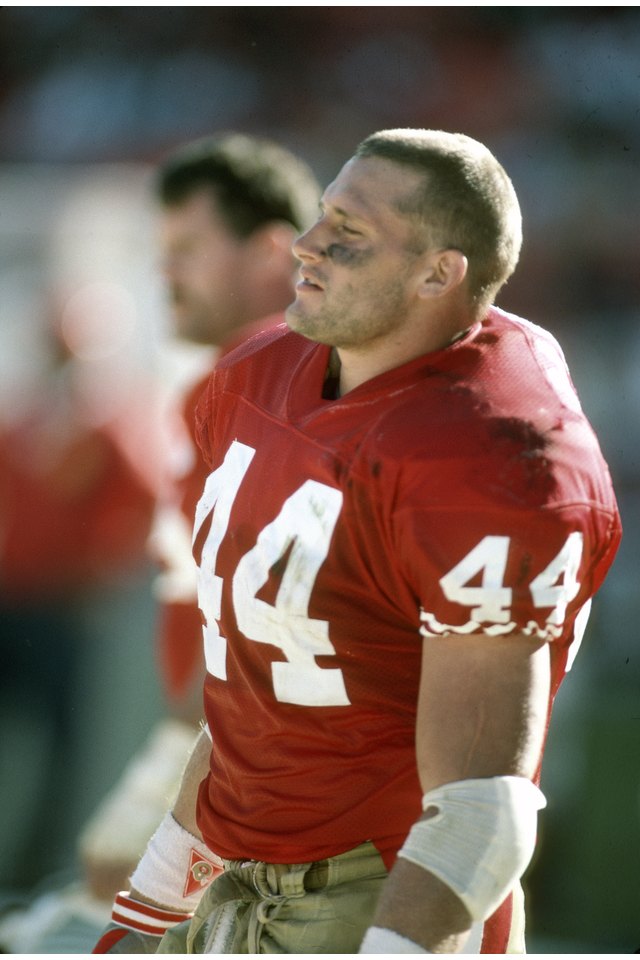How many NFL Fullbacks? Plus, Drills for Football Fullbacks (Updated 2022)

How Many Teams Have NFL Fullbacks?
19 NFL Teams have an active Fullback on the roster in 2022.
- Atlanta Falcons
- Baltimore Ravens
- Buffalo Bills
- Carolina Panthers
- Chicago Bears
- Cleveland Browns
- Dallas Cowboys
- Detroit Lions
- Houston Texans
- Kansas City Chiefs
- Las Vegas Raiders
- Los Angeles Chargers
- Miami Dolphins
- Minnesota Vikings
- New Orleans Saints
- New York Jets
- Pittsburgh Steelers
- San Francisco 49ers
- Tennessee Titans
There are 25 active roster fullbacks in the NFL for 2022. The San Francisco 49ers, the Minnesota Vikings and the Los Angeles Chargers have 2 fullbacks:
- San Francisco 49ers: Josh Hokit and Kyle Juszczyk
- Minnesota Vikings: C.J. Ham and Jake Bargas
- Los Angeles Chargers: Zander Horvath and Gabe Nabers
The heaviest fullbacks are:
- Patrick Ricard: 300 pounds Baltimore Ravens
- Jakob Johnson: 255 pounds Las Vegas Raiders
- Paul Quessenberry: 250 pounds Houston Texans
- The tallest NFL fullbacks are 6' 3" and only C.J. Ham, Minnesota Vikings, is shorter than 6 feet.
- Kyle Juszczyk, San Francisco 49ers, is the first Harvard alumnus to score a touchdown in the NFL.
- Current fullbacks like Kyle Juszczyk, C.J. Ham, Andy Janovich of the Denver Broncos and Patrick Ricard of the Baltimore Ravens have more career receiving yards than career rushing yards.
Drills for Football Fullbacks
Football games can be won or lost in the trenches. Amongst the big bodies, the unsung heroes of the offense -- the fullbacks -- make their bread, often going unnoticed and seldom getting the credit they deserve.
To be a successful fullback, you need to work hard in practice to develop strength and blocking techniques, while becoming a viable option to carry the ball in short yardage situations and a reliable receiver in the passing game.
1. Hitting the Blocking Sleds
Lead blocking is as much about technique and body position as it is about size and strength. At the coach’s whistle or snap count, explode out of your three-point stance, staying low and in an athletic position.
When engaging the sled or dummy, lead with your shoulder, keep your head up and hands inside, and drive with your legs. Keep your feet moving and continue to drive the sled until the coach’s whistle.
Repeated reps on the sled will encourage proper blocking technique and finishing your blocks will become second nature.
2. One-On-One Blocking
Practice blocking with sleds and dummies throughout the season, but blocking an actual defender will also pay off.
- Have a coach position cones or pads along the line of scrimmage to simulate the offensive linemen.
- Line up about 3 yards from the line of scrimmage, with another player at the linebacker position about 3 yards on the opposite side of the ball.
- At the whistle or snap count, meet the linebacker in one of the holes.
Using the techniques that you learned on the sleds, work on driving the linebacker out of the hole or steer the linebacker toward the sideline.
3. Pass Catching
The most common pass a fullback will catch is a swing pass in either flat.
- At the whistle or snap count, come out of your stance in an arcing path, rather than a lateral sprint, so that your momentum is moving up field before you catch the ball.
- Work on quickly getting your head around to look for the pass.
- Catch the ball with your hands and quickly tuck it away and look up field so you are ready to make a play once you have possession.
4. Running the Gauntlet
A coach should position a number of players, some outfitted with blocking pads, in two lines about a yard apart each.
- Line up behind the quarterback or coach and take the handoff.
- Stay low and drive your feet through the defenders, who will attempt to knock you off balance or strip the ball.
- Protect the ball with both arms until clear of the last defender.
Always finish the play by continuing to run until you hear a whistle or reach the end zone.
Writer Bio
Brian Lancette is a sports, travel and comedy writer based in Chicago by way of Northwest Wisconsin. His most recent work includes running youth baseball camps with the Boston Red Sox and Chicago Cubs. Lancette graduated from the University of Wisconsin (Eau Claire) with a degree in history and global studies.
